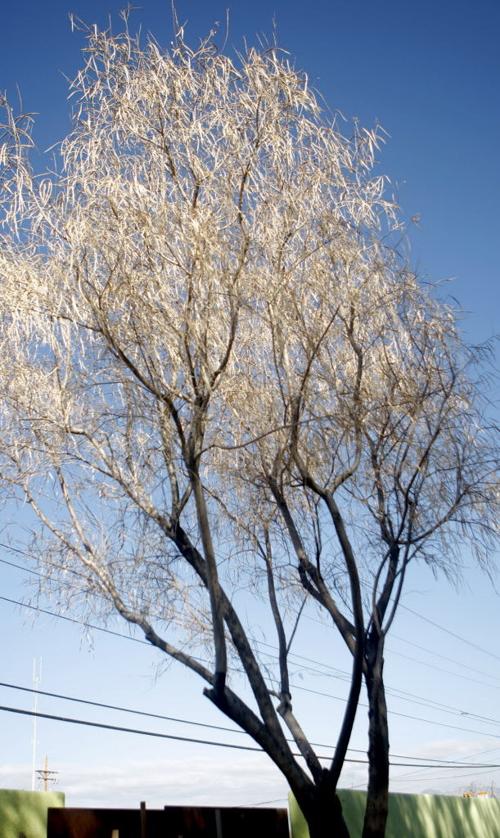Q: We have some old mesquite trees and palo verde trees near our walking lanes. There are old clay unsealed sewer pipes nearby at a depth of about 4 feet. Are we at risk for sewer problems? How far should any tree be from a lane with old sewers? As for new trees, we were thinking of planting more of the above but not near the walk lanes. Desert willows were also suggested, but they may need more water. Do you have any other suggestions?
A: Your sewer pipes are at risk with tree roots nearby. Typically, mature tree roots extend 2 to 3 times the width of the crown so it is wise to give any potential obstructions such as sewer pipes, sidewalks and houses enough room. Since the trees are old and so are the pipes, you might wait and see if a problem presents. It is certainly a good idea to have the pipes inspected or monitor the water use rate if you suspect a leak. There are quite a few choices for low water use trees. The decision usually begins by measuring the space you have available both below ground and above ground. The mature size of a tree should be accounted for in any plan to plant. Desert willows are a low water use tree and a good one if your space isn’t large enough for a mesquite tree. Other species to consider include white thorn acacia, ironwood and Texas ebony. Your plan should also include irrigation even though you are planning to go with a low water use tree. Even native desert species need some water.
Peter L. Warren is the urban horticulture agent for the Pima County Cooperative Extension and the University of Arizona. Questions may be emailed to





